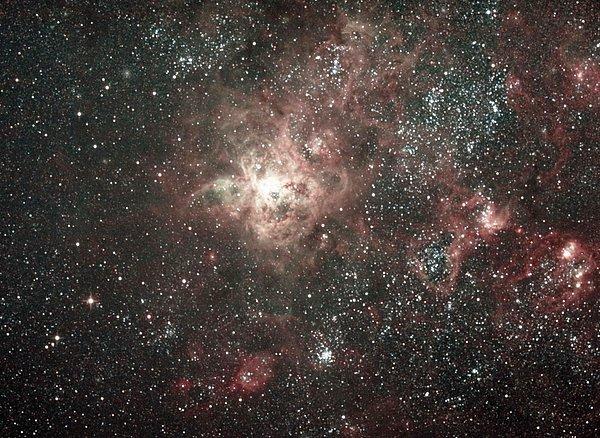Astronauts: Pioneers in Space Exploration
An astronaut is a highly trained professional equipped to travel into space and conduct research under extreme conditions. Often viewed as explorers, astronauts undertake some of the most challenging and daring missions to expand our understanding of space environments and microgravity. The intense preparation and specific mission objectives that astronauts face are fundamental to human spaceflight.
1. Rigorous Training for Space Missions
The journey of an astronaut begins with years of extensive training designed to prepare them for the mental and physical demands of space missions. This training includes:
Microgravity Simulation: Astronauts train in neutral buoyancy environments, like underwater training tanks, to simulate the effects of weightlessness in space. This experience is crucial for understanding how to move and operate in zero gravity.
Technical Skills: Astronauts must master complex equipment, from spacecraft controls to life-support systems. They learn to repair machinery, conduct emergency procedures, and maintain communication with mission control.
Survival Training: In case of an emergency landing, astronauts are trained in survival skills for various terrains, from oceans to deserts, preparing them for any unexpected conditions upon re-entry.
2. Conducting Experiments in Microgravity
The microgravity environment of space offers a unique laboratory for scientific experiments that can’t be replicated on Earth. Astronauts carry out studies across various fields, such as:
Biology and Medicine: Studying how the human body changes in microgravity helps researchers understand muscle atrophy, bone density loss, and other effects of space travel on health.
Material Science: Astronauts test the behavior of different materials in space to develop technologies that can withstand extreme temperatures and radiation. These findings contribute to advancements in spacecraft design and satellite technology.
Fluid Dynamics: Fluids behave very differently in microgravity, providing insights into processes such as fuel management and crystal growth that are vital for space engineering.
3. Spacewalks and Repair Missions
Spacewalks, also known as Extravehicular Activities (EVAs), are crucial for maintaining space equipment. Astronauts perform repairs on satellites, the International Space Station (ISS), and other structures. Their tasks can range from routine maintenance to urgent repairs, which require precision and quick problem-solving skills. The data collected from these missions helps scientists and engineers improve space mission planning.
4. Life in Microgravity
Adjusting to life in microgravity is one of the biggest challenges astronauts face. Simple tasks like eating, sleeping, and even brushing teeth become entirely different in a weightless environment. Astronauts’ experiences and solutions to these challenges inform future long-duration missions, such as potential Mars missions. Moreover, studies on the psychological effects of isolation and confinement in space help develop mental health strategies for deep space exploration.
Astrophysicists: Decoding the Universe’s Mysteries from Afar
Unlike astronauts, who physically travel to space, astrophysicists study the universe from Earth by observing celestial objects and phenomena. They use advanced telescopes, computational models, and satellite data to explore questions about the origins, structure, and evolution of the cosmos.
1. Studying Galaxies and the Structure of the Universe
Astrophysicists study galaxies—massive collections of stars, nebulae, and dark matter—to understand how the universe is organized. By analyzing different types of galaxies:
Spiral Galaxies: Such as the Milky Way, these galaxies have spiral arms that contain young, bright stars. Studying spiral galaxies provides insights into star formation.
Elliptical Galaxies: These galaxies are generally older and have less gas and dust, indicating that they formed earlier in the universe’s history.
Irregular Galaxies: These galaxies often result from gravitational interactions or mergers with other galaxies, showcasing how cosmic collisions shape the universe’s structure.
2. Unveiling the Mysteries of Nebulae
Nebulae are enormous clouds of gas and dust where new stars are born. Astrophysicists study nebulae to learn about stellar birth and death cycles. Different types of nebulae provide valuable information about the cosmos:
Emission Nebulae: Glow due to ionized gas, typically illuminated by nearby stars. The Orion Nebula, a famous emission nebula, reveals insights into young star clusters.
Planetary Nebulae: Formed when stars similar to our sun reach the end of their lifecycle, these nebulae provide clues about the future of our solar system.
3. Exploring Black Holes and Dark Matter
Black holes and dark matter are two of the universe’s most perplexing entities. Black holes, regions of intense gravitational pull, challenge our understanding of space and time, while dark matter, though invisible, appears to influence the structure of galaxies. Astrophysicists use mathematical models and observations to study these phenomena, pushing the boundaries of theoretical physics.
4. Using Advanced Telescopes and Data Analysis
From the Hubble Space Telescope to the newly launched James Webb Space Telescope, astrophysicists rely on high-powered telescopes to collect data on distant stars, galaxies, and exoplanets. By analyzing this data, astrophysicists create models of cosmic events, such as supernovae or gravitational waves, that deepen our understanding of cosmic evolution.
Collaboration Between Astronauts and Astrophysicists
While astronauts bring back valuable firsthand data and experience from space missions, astrophysicists use that data to refine scientific theories and develop predictions. This synergy has led to groundbreaking discoveries, from understanding solar radiation to identifying the potential for habitable exoplanets.
Conclusion
The work of astronauts and astrophysicists allows humanity to expand its grasp of the universe. While astronauts are the courageous explorers who physically travel into space, astrophysicists decode cosmic phenomena from Earth. Together, they unveil the secrets of the universe and inspire humanity to reach beyond our planet, toward the unknown depths of outer space.
This article is for informational purposes only and does not constitute professional advice.


Hiç yorum yok: